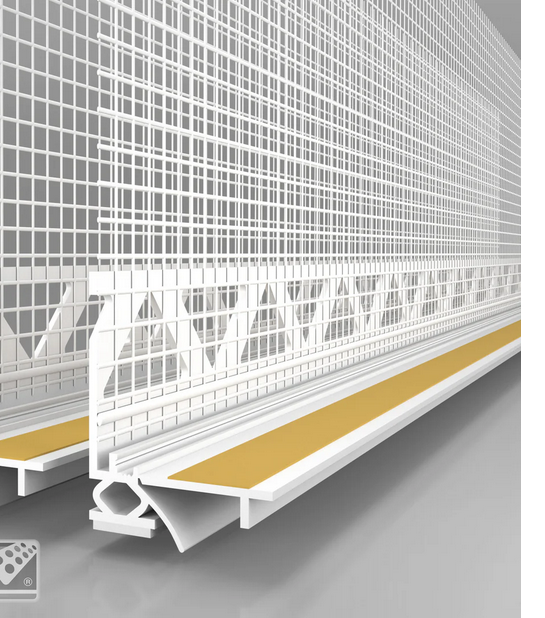-
Posts
506 -
Joined
-
Last visited
Personal Information
-
Location
Northern Ireland
Recent Profile Visitors
The recent visitors block is disabled and is not being shown to other users.
Mr Blobby's Achievements

Regular Member (4/5)
114
Reputation
-
The first floor ceilings were plasterboarded a few weeks ago and then, of course, the dust generator went into overdrive covering the joists and plaster board with a mega layer of dust. I now have this terrible urge to go into the loft (before its partially boarded) and set about the impossible task of hoovering up the dust. I really don't like dust. Builder thinks I'm mad. Am I?
-
That's what I thought. Left open, our builder tells me the renderer will fill them in next month. Just seems odd the installer didn't close them. I could go do it myself but then the builder will laugh at me.
-
About the width of my fat fingers
-
Beads have been blown into the cavity, leaving me with a house that looks like a colander, inside and out. Can I leave the holes open until rendering at the end of next month? Or is it better to mix up.some mortar and fill them?
-
I have been assuming for the last year that the gutters are not installed (brackets are in place) because the render needs to go behind the gutter at the top and gutters would cause an obstruction. And so I have never questioned it. I will ask the builder tomorrow why the gutters are not installed tomorrow and suggest that gutters need to be in place to protect wet render. Are gutters normally installed before rendering?
-
I agree. I wish gutters had been installed, even temporarily, a year ago. Walls are green at the valleys so I recently put temporary guttering up at the valleys. Our builder doesnt seem to care about this. Down to me to clean the green off before the rendering is done.
-
So, after frustrating delays all summer, the only option I now have for rendering this year is the last week of November. Which in Northern Ireland means its cold, dark and wet. Do I reject the builders optimism and assurances and hold off until April/May? Or chance it with the weather? This is so damn annoying. Block house. KRend HP12 base coat + K1 silicone. No gutters up so walls are usually nice and wet.
-
Accepted practice is to install perimeter insulation around screed, which makes a lot of sense in a traditional build on the ground floor where the UFH would otherwise be heating cold walls. But does the screed need to be insulated in a well insulated floor? Our 100mm screed will be going over first floor hollow core slabs. Block walls have 250 cavity and no thermal bridges anywhere as far as I know. Foundation is Kore slab. We will have some UFH loops in the FF screed, but this is hopefully not required for heating, but is there just in case. We may need it for cooling. Do we really need to insulate the screen from a very will insulated perimiter? Is the insulation still required to prevent cracking in the screed? Our builder also wants to insulate below FF screed by first pouring 50mm insulated screed and then 50mm flow screed on top. I would be quite happy for the UFH heat/cool to pass to the hollow core slabs rather than have quick response times. Is that mad? UFH flow temps will of course be much closer to ambient temps than a "normal" house. In a well insulated passive house then, is there any need to insulate the screed... 1. Do I need 50mm insulated screed below 50mm flow screed to insulate the FF Screed from the hollow core slabs below? 2. Is there any point in installing perimeter insulation when the walls will hopefully not be "cold"?
-
Thanks all. Stop beads look neater and make sense to me. This afternoon the joiners on site gave me that look (the rolling eyes shaky head look) when I asked about using a stop bead at the window frame/reveal junction. Said they'd never seen anything like it and the vertical DPC is there to keep it weatherproof and nothing else is needed. I can see this is going to be an impossible task to convince anyone that there is a another way of finshing the render at the reveal 🙄 Just to be clear, our windows are aluclad upvc, not aluclad timber. Our walls are block cavity, to be rendered, no EWI. Is stop bead still relevant? On line examples look to be for EWI.
-
I'll check with the render guy but talking to trades on site the only way it's done here is to render up to the vertical dpc against the window frame and then trim the dpc after rendering. No bead at the window frame. Silicon in the crack later if you want. The vertical dpc, I'm told, will stop water ingress so why would I want to change it? No concern for wind blowing into the cavity because air tight tape inside 🤷
-
Finally, finally we will be getting the house rendered in the next few weeks. If it stops raining before we run out of time this year. Build is block cavity, alu-clad windows in check reveals. In the reveal between window and check is the vertical DPC. Most windows are tight at the front against the check reveal but some have up to 5mm gap. I am told by the builder that reveals will be rendered to window frame and hence this gap will be fixed. Which leaves me naturally concerned that this is crap weatherproofing as render and frame will obviously crack. When I asked about using a bead against the window he said its not needed. A very long time ago @Iceverge helpfully suggested a window reveal bead to provide a more durable seal between render and window frame. Like this: .. which I like the look of very much. My builder is, however, going to roll his eyes when I suggest this. Why on earth would I need to use a bead here anyway, when there's vertical DPC, right? So, just to confirm, can a stop bead like this be used at the window/reveal junction and is it a good idea? This product seems to be marketed at EWI applications, which my house is not. If this is the best way to do it (my builder prefers to do things the quickest and cheapest way unless I intervene) then is the image above of the right product? And what about the vertical dpc in the way? What colour bead? White to match the render I guess. Or grey to match the window frames?
-

Alterative option to 150mm celotex + 50mm celotex?
Mr Blobby replied to flanagaj's topic in Heat Insulation
Do you have a Garage? -

Alterative option to 150mm celotex + 50mm celotex?
Mr Blobby replied to flanagaj's topic in Heat Insulation
Our original design was to put the insulation on top and have a warm roof but it proved problematic. I forget the detials but I think the SE didnt like it. Something to do with screw length to fix PIR and sarking. -

Alterative option to 150mm celotex + 50mm celotex?
Mr Blobby replied to flanagaj's topic in Heat Insulation
We have a similar roof construction to your design. Cold roof, warm loft, standing seam on top. It works well giving us a warm space in the loft and plenty of space for the MVHR in a warm space, but is not the cheapest option. As others have said, use wool between the rafters and PIR under. No way you will cut the PIR to fit snugly. Fix and tape membrane under the PIR with battens. If you want to plasterbard then fix the plasterboard to the battens, thus keeping the membrane intact. We attached our cieling joists to a timber fastened to the wall under the joists so that we could run the airtight membrane behind it without being penetrated by joists. Like this: Frget about GSE inset panels on a standing seam roof. Use S5 clamps instread. And Standing seam is too nice for panels so install them at the back only. You will understand as soon as the roof is on. I'm assuming you have a timber on top of a steel ridge beam. Its not clear from your drawings. You need to keep the steel on the warm side, not in the middle of the insulation. Assuming you have gable ends then build the inner leaf lower than the outer so that you can pack some insulation between the top of the wall and the timber directly under the standing seam. We used sarking instead of ply or osb. More time and cost but the roofers loved it. In retrospect I would have rn the airtight membrane vertically instead of horizaontally. I think it would have been easier to install crease free. And better if the roofers had cut battens to install the membrane in sections but, for whtever reason, my roofers hate cutting battens. -
Thanks for the advice. I visited the other house my builder was working on about a month ago when the renderer was on site. He had a sprayer and a couple of helpers feeding the mixer, so to a layperson like myself, it looked like they knew what they were doing. Final numbers from the renderer are just in: Parex BL10 white: £12,200. Which I did not ask for (I asked for krend silicone K quote) because AFAICS the BL10 is not silicone based and crack resistance is important. Parex acrylic: £24,000. I'll look again at the KRend reference house down the road, and probably end up with that as the safe and cheaper option.




